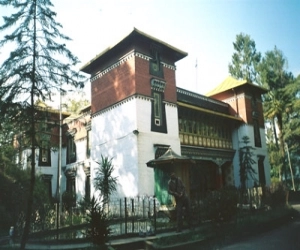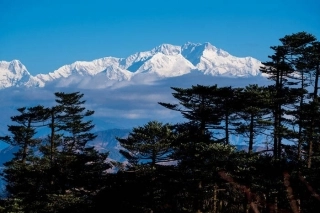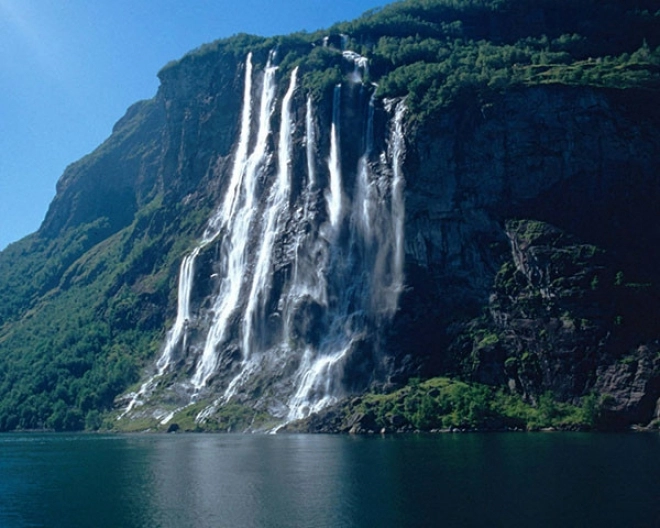Top Attractions in Gangtok
Discover the must-visit places in Gangtok
About Gangtok
Gangtok is a city, municipality, the capital and the largest town of the Indian state of Sikkim. It also is the headquarters of the East Sikkim district. Gangtok is located in the eastern Himalayan range, at an elevation of 1,650 m (5,410 ft). The town's population of 100,000 are from different ethnicities such as Nepalis, Lepchas and Bhutia. Nestled within higher peaks of the Himalaya and enjoying a year-round mild temperate climate, Gangtok is at the centre of Sikkim's tourism industry.
Gangtok rose to prominence as a popular Buddhist pilgrimage site after the construction of the Enchey Monastery in 1840. In 1894, the ruling Sikkimese Chogyal, Thutob Namgyal, transferred the capital to Gangtok. In the early 20th century, Gangtok became a major stopover on the trade route between Lhasa in Tibet and cities such as Kolkata (then Calcutta) in British India. After India won its independence from Britain in 1947, Sikkim chose to remain an independent monarchy, with Gangtok as its capital. In 1975, after the integration with the union of India, Gangtok was made India's 22nd state capital.
The precise meaning of the name "Gangtok" is unclear, though the most popular meaning is "hill cut". Today, Gangtok is an emerging urbanized city with a literacy rate of 94%.
Like the rest of Sikkim, not much is known about the early history of Gangtok. The earliest records date from the construction of the hermitic Gangtok monastery in 1716. Gangtok remained a small hamlet until the construction of the Enchey Monastery in 1840 made it a pilgrimage centre. It became the capital of what was left of Sikkim after an English conquest in the mid-19th century in response to a hostage crisis. After the defeat of the Tibetans by the British, Gangtok became a major stopover in the trade between Tibet and British India at the end of the 19th century. Most of the roads and the telegraph in the area were built during this time.
In 1894, Thutob Namgyal, the Sikkimese monarch under British rule, shifted the capital from Tumlong to Gangtok, increasing the city's importance. A new grand palace along with other state buildings was built in the new capital. Following India's independence in 1947, Sikkim became a nation-state with Gangtok as its capital. Sikkim came under the suzerainty of India, with the condition that it would retain its independence, by the treaty signed between the Chogyal and the then Indian Prime Minister Jawaharlal Nehru. This pact gave the Indians control of external affairs on behalf of Sikkimese. Trade between India and Tibet continued to flourish through the Nathula and Jelepla passes, offshoots of the ancient Silk Road near Gangtok. These border passes were sealed after the Sino-Indian War in 1962, which deprived Gangtok of its trading business. The Nathula pass was finally opened for limited trade in 2006, fuelling hopes of economic boom.
In 1975, after years of political uncertainty and struggle, including riots, the monarchy was abrogated and Sikkim became India's twenty-second state, with Gangtok as its capital after a referendum. Gangtok has witnessed annual landslides, resulting in loss of life and damage to property. The largest disaster occurred in June 1997, when 38 were killed and hundreds of buildings were destroyed.
Apart from the major religious festivals of Dashain, Tihar, Christmas, Holi etc., the diverse ethnic populace of the town celebrates several local festivals. The Lepchas and Bhutias celebrate the new year in January, while Tibetans celebrate the new year (Losar) with "Devil Dance" in January–February. The Maghe Sankranti, Ram Navami are some of the important Nepalese festivals. Chotrul Duchen, Buddha Jayanti, the birthday of the Dalai Lama, Loosong, Bhumchu, Saga Dawa, Lhabab Duechen and Drupka Teshi are some other festivals, some distinct to local culture and others shared with the rest of India, Nepal, Bhutan and Tibet.
A popular food in Gangtok is the momo, a steamed dumpling containing pork, beef and vegetables cooked in a doughy wrapping and served with watery soup. Wai-Wai is a packaged snack consisting of noodles which are eaten either dry or in soup form. A form of noodle called thukpa, served in soup form is also popular in Gangtok. Other noodle-based foods such as the chowmein, thenthuk, fakthu, gyathuk and wonton are available. Other traditional Sikkimese cuisines include shah-phaley (Sikkimese patties with spiced minced meat in a crisp samosa-like case) and Gack-ko soup. Restaurants offer a wide variety of traditional Indian, continental and Chinese cuisines to cater to the tourists. Churpee, a kind of hard cheese made from cow's or yak's milk is sometimes chewed. Chhang is a local frothy millet beer traditionally served in bamboo tankards and drunk through bamboo or cane straws.
Football (soccer), cricket and archery are the most popular sports in Gangtok. The Paljor Stadium, which hosts football matches, is the sole sporting ground in the city. Thangka—a notable handicraft—is an elaborately hand-painted religious scroll in brilliant colours drawn on fabric hung in a monastery or a family altar and occasionally carried by monks in ceremonial processions. Chhaams are vividly costumed monastic dances performed on ceremonial and festive occasions, especially in the monasteries during the Tibetan new year.
Top Trending Attractions in Gangtok

Namgyal Institute Of Tibetology
Namgyal Institute of Tibetology is a Tibet museum in Gangtok, Sikkim, India. The foundation stone of...

Khangchendzonga National Park
Located at the heart of the Himalayan range in northern India (State of Sikkim), the Khangchendzonga...
How to Reach Gangtok
Map of Gangtok
Frequently Asked Questions
What is the best time to visit Gangtok?
The best time to visit depends on weather and local events.
What are the must-visit attractions in Gangtok?
Explore the top attractions listed in the Attractions section.
How can I get around Gangtok?
Public transport, taxis, and walking are common options.
Quick Facts
Gangtok
Population :98658
Languages :Hindi, Nepali, Bhutia, Lepcha, Limbu, Newari, Rai, Gurung, Mangar, Sherpa, Tamang and Sunwar
Pincode :737101
Altitude :1650 Meter
STD Code :03592
Travel Insight

Vrindavan Chandrodaya Mandir Vrindavan Chandrodaya Mandir is an ...

On 13 Feb 2016, I went Lucknow to attend my cousin's reception party. ...
Top travel News
Essential India
Your trip to India is incomplete if you have not...- Danced to a punjabi number
- Tasted the spicy street food
- Picked up a local Rajasthani dress and jutti (footwear)
- Tried an ayurvedic full-body massage
- Watched a classical dance performance
- Taken a train













